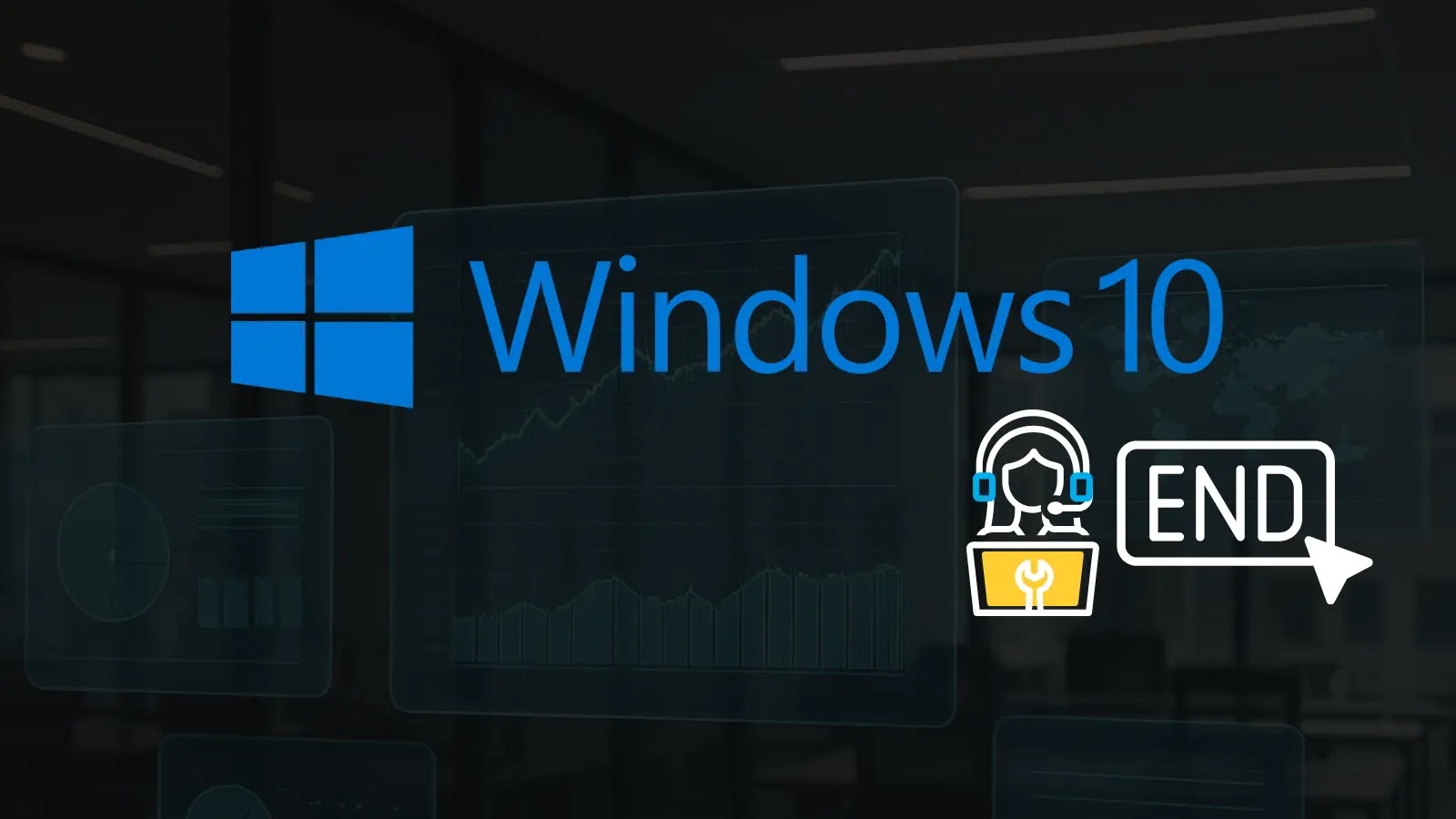
Support for Windows 10 Ends Today Leaving Users Vulnerable to Cyberattacks
Today marks a significant shift in the cybersecurity landscape for millions of users worldwide. As of today, Microsoft has officially ended free support for Windows 10, closing the chapter on a decade of maintenance for one of the most widely adopted operating systems in history. This cessation of support carries profound implications, leaving countless devices vulnerable to insidious cyber threats and sophisticated attack vectors. Understanding these risks and proactively addressing them is no longer optional; it’s an immediate imperative for every individual and organization still relying on this now unsupported platform.
The End of an Era: What Windows 10 Support Ending Means
For ten years, Windows 10 received consistent care from Microsoft, including crucial security patches, performance enhancements, and new functionalities. However, that era has concluded. Without ongoing support, devices running Windows 10 will no longer receive free updates designed to counteract emerging CVEs (Common Vulnerabilities and Exposures). This includes critical security fixes that address newly discovered flaws, leaving a gaping hole in your digital defenses. Imagine a fortress without its regular maintenance crew; eventually, the walls weaken, and new entry points appear. That’s the reality for Windows 10 users now.
The lack of free security updates is the most immediate and pressing concern. Threat actors constantly probe for weaknesses, and without Microsoft actively patching these vulnerabilities, your systems become prime targets for exploitation. This could manifest as malware infections, ransomware attacks, data breaches, and a host of other malicious activities that exploit unpatched operating system flaws.
Heightened Vulnerability: Why Unpatched Systems Are Dangerous
Operating systems are complex pieces of software, and despite rigorous testing, vulnerabilities are inevitably discovered over time. When these vulnerabilities are identified, reputable vendors like Microsoft issue patches to close these security gaps. Without these patches, every newly discovered vulnerability becomes a permanent entryway for attackers. For example, a zero-day exploit, like a theoretical CVE-2023-XXXXX impacting a core Windows 10 component, would now remain unaddressed for free users, allowing threat actors to leverage it repeatedly.
The danger extends beyond just newly found flaws. Even well-known vulnerabilities might be re-exploited with new attack techniques. Older, unfixed bugs, such as those that might have been addressed in Windows 11 but remain open in unsupported Windows 10 versions, provide a persistent attack surface. This increases the likelihood of successful phishing campaigns, drive-by downloads, and the installation of persistent malware that can exfiltrate data or compromise an entire network.
Remediation Actions: Protecting Your Devices Now
Given the immediate risks, taking decisive action is paramount. Here’s a comprehensive plan to protect yourself and your organization:
- Upgrade to a Supported Operating System: The most secure and recommended long-term solution is to migrate to a currently supported version of Windows, such as Windows 11. This ensures you continue to receive crucial security updates and feature enhancements directly from Microsoft.
- Isolate and Segment Windows 10 Devices: If immediate upgrading isn’t feasible, isolate Windows 10 machines from critical networks. Implement network segmentation to limit their access to sensitive resources and prevent potential breaches from spreading. Use firewalls to restrict inbound and outbound connections.
- Intensify Endpoint Detection and Response (EDR): Enhance your endpoint security posture. Deploy advanced EDR solutions on all Windows 10 devices. These tools can detect suspicious activities, provide real-time threat intelligence, and block known malware even without OS-level patches.
- Implement Strongest Possible Antivirus/Anti-Malware: Ensure all Windows 10 systems are running up-to-date, enterprise-grade antivirus and anti-malware software. Configure these tools for aggressive scanning and real-time protection.
- Regular Backups: Implement a robust and consistent backup strategy for all critical data on Windows 10 machines. Store these backups offline or in a secure, segmented cloud environment to protect against ransomware and data loss.
- Educate Users: Phishing and social engineering attacks are often the entry point for larger breaches. Train users on identifying suspicious emails, links, and attachments, especially when operating on a vulnerable system.
- Consider Extended Security Updates (ESU): For organizations that absolutely cannot upgrade immediately, Microsoft offers an Extended Security Update (ESU) program for a fee. This provides continued critical and important security updates for up to three years. This is a temporary measure, not a long-term solution.
Tools for Enhanced Security and Mitigation
While upgrading is the best defense, certain tools can help mitigate risks on remaining Windows 10 systems:
| Tool Name | Purpose | Link |
|---|---|---|
| CrowdStrike Falcon | Advanced EDR and threat intelligence | CrowdStrike |
| SentinelOne Singularity | AI-powered endpoint protection | SentinelOne |
| Acronis Cyber Protect | Backup, recovery, and anti-ransomware | Acronis |
| PfSense | Open-source firewall and router | PfSense |
| VeraCrypt | Disk encryption for data protection | VeraCrypt |
Conclusion: Proactive Security is Your Best Defense
The deprecation of Windows 10 support represents a critical inflection point for cybersecurity. Continuing to operate unsupported software without compensatory security measures is an invitation for trouble. The absence of free security patches transforms every unpatched Windows 10 device into a potential weakness, a conduit for attackers to compromise systems, steal data, or deploy debilitating malware. Prioritize upgrading to supported operating systems. Where that’s impossible in the short term, implement robust endpoint protection, network segmentation, comprehensive backup strategies, and continuous user education. Your proactive approach now will safeguard your digital assets against the increasing sophistication of cyber threats.





